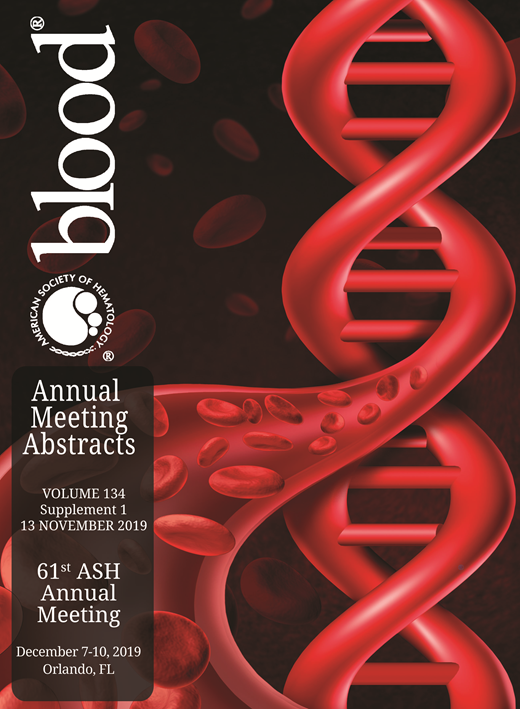Genomic advances have initiated a new era of precision oncology. Targeted therapeutics can rationally select potentially responsive patient populations and exclude resistant patients based on molecular mechanisms of action. The application of immunomodulatory drugs (IMiDs) evolved from unselective usage to the identification of del(5q) as a target, which then led to mechanistic clues and clarification of its mode of action. Lenalidomide (LEN) has been used in non del(5q) patients with a variable response rate, but the molecular underpinnings for LEN efficacy in this setting are not known. Genomic analyses (Negoro et al., Leukemia 2016) have provided only a marginal improvement in response prediction, suggesting that other factors might be relevant in sensitizing cells to LEN.
The effects of LEN are related to its binding affinity to cereblon (CRBN), the substrate adaptor of the CRL4CRBN E3 ubiquitin ligase, a cullin-ring ligase consisting of damaged DNA-binding protein1(DDB1), cullin4a (CUL4A), and regulator of cullins-1 (ROC1). LEN selectively activates CRL4CRBN E3 ubiquitin ligase to selectively degrade CSNK1A1 leading to synthetic lethality in patients with del(5q) that are haploinsufficient (HI) for CSNK1A1. However, LEN and the new generation compounds pomalidomide and iberomide (CC-220) also trigger recruitment and degradation of the zinc finger transcription factors IKAROS (IKZF1, 7p12.2) and AIOLOS (IKZF3, 17p12-q21.1) through CRBN, and therefore promote their proteosomal degradation. The synthetic lethality of these immunomodulator agents relies on expression levels of AIOLOS and IKAROS. Response to those agents depends strictly on low expressions of AIOLOS and IKAROS sensitizing certain cell types (e.g., myeloma). We hypothesized that levels of LEN sensitivity might correlate with expression levels of its targets in selected disease subtypes of myeloid neoplasia (MN).
We studied a large cohort of patients with MN (n=3,328) and we identified 122 patients with -7 and 194 patients with del(7q). We noted that for those cases with informative RNA-seq expression, IKAROS exhibited haploinsufficient (HI) mRNA levels in 67% of patients with -7 and 40% in del(7q), as defined based on levels <25%tile of the diploid expression of cases (Kerr, ASH 2019). Since IKAROS is described to be a target of iberomide, we hypothesized that monosomy 7 (-7) but not del(7q) could selectively benefit from this agent, analogous to LEN in del(5q). Consistent with this proposition we further selected 160 hematopoietic cancer cells with available IKZF1 CNV status in a publicly available database of cell drug sensitivity (cancerrx). For all cell lines, the anti-proliferative effect of LEN was described. Cells with monosomy of IKZF1 (CNV=1) had an increased sensitivity to LEN as their IC50 was lower than compared to that of cells with IKZF1 with CNV ≥ 2 (6.1μM vs. 24.3μM). To further validate this prediction, we revisited the responsiveness to LEN (defined by Negoro et al., Leukemia 2016) of non-del(5q) MDS patients (n=79) showing an ORR of 40%. By focusing on patients with alterations in chr7 we identified 10 patients with MDS and high or very high International Prognosis Scoring System-Revised (IPSS-R) risk [6 patients with -7 and 4 patients with del(7q)]. In this cohort LEN response was assessed at 3 and 6 months; 4 out 6 patients with -7 responded to LEN, while del(7q) patients were all refractory (n=4). Responding monosomy 7 patients with complete bone marrow response (n=3) received 10 or 50mg doses of LEN (2 patients had a complex karyotype and 1 had isolated -7). The remaining responding patient had a partial response with hematological improvement. Interestingly, this patients was treated with a 5mg dose of LEN and had a TP53 mutation. In the other 2 patients: one with -7, LEN was discontinued because of pancytopenia associated with treatment, while in the other one -7 could not be confirmed by FISH. In the group of del(7q) patients, complex karyotypes and the presence of del(5q) in 2 did not predict for better response.
Our preliminary results suggest that selective application of new generation IMiDS targeting IKAROS have clinical potential in patients with -7. Supportive data from in vitro cellular models will be comprehensively presented.
Walter:MLL Munich Leukemia Laboratory: Employment. Hutter:MLL Munich Leukemia Laboratory: Employment. Meggendorfer:MLL Munich Leukemia Laboratory: Employment. Nazha:Tolero, Karyopharma: Honoraria; Incyte: Speakers Bureau; Abbvie: Consultancy; Jazz Pharmacutical: Research Funding; Daiichi Sankyo: Consultancy; Novartis: Speakers Bureau; MEI: Other: Data monitoring Committee. Sekeres:Celgene: Membership on an entity's Board of Directors or advisory committees; Millenium: Membership on an entity's Board of Directors or advisory committees; Syros: Membership on an entity's Board of Directors or advisory committees. Haferlach:MLL Munich Leukemia Laboratory: Employment, Equity Ownership. Maciejewski:Alexion: Consultancy; Novartis: Consultancy.
Author notes
Asterisk with author names denotes non-ASH members.

